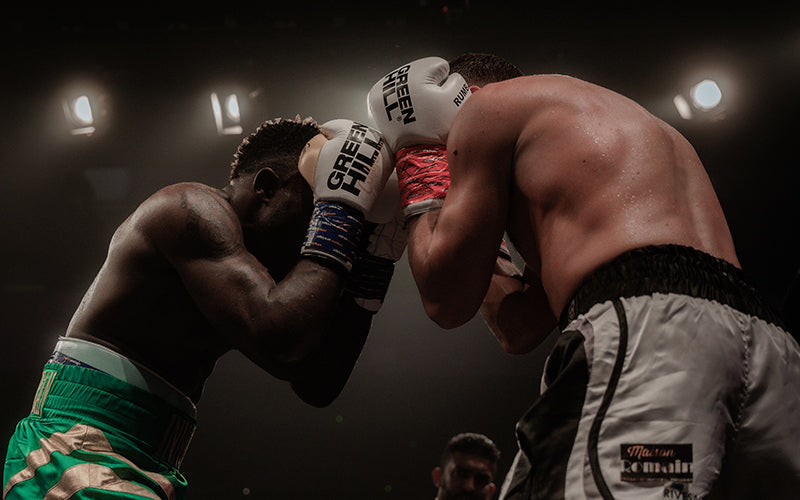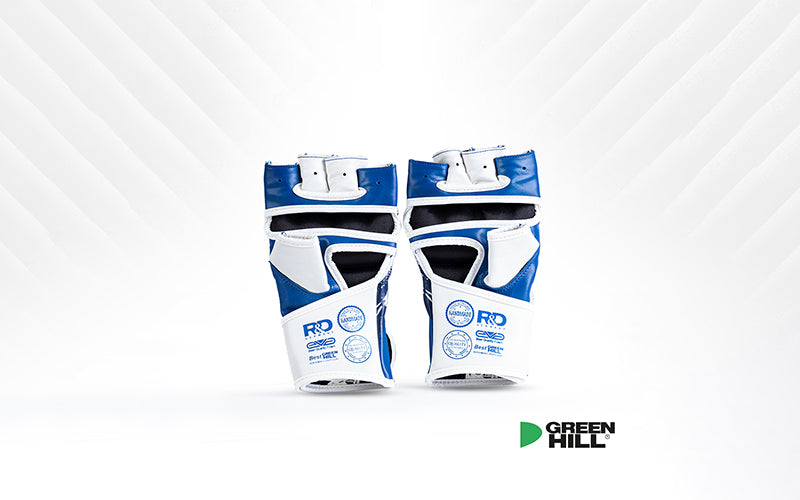Boxing is a relatively older sport that is recognized all over the world. However, despite being new, MMA has also gathered a huge fan base. Many believe that MMA is among the fastest-rising sports in the world and it has the potential to become an even bigger phenomenon than boxing.

Though both these sports share many similarities, their differences are even greater. In this article, we are going to discuss what makes boxing and MMA different from each other so stay with us till the end.
Differences Between Boxing and MMA
Fighting Styles
Boxing is done with hands and fists and you are only allowed to hit above the belt. This sport is done in a stand-up style which requires careful footwork, hand speed, and head movement.
Boxing is a little simpler since it doesn’t involve striking with all of your limbs. In boxing, you are only allowed to use punches, jabs, and uppercuts to knock down your opponent.
MMA involves different fighting styles including Kung Fu, Muay Thai, Jiu-Jitsu, wrestling, etc. This sport involves standup, clinch, and ground fighting which makes it closest to a legal street fight. In MMA, you can fight with your fists, elbows, knees, and kicks as well.
Fighting Rules
Boxing follows the famous Queensberry rules that were instituted back in 1867. In this sport, fighters are only allowed to use their fists and they cannot attack below the belt. Hitting with your elbows, spinning strikes, and attacks on the back of the head are also strictly forbidden.
After getting knocked down, if the boxer is able to get up and recover within a count of 10, he is allowed to continue. In some boxing associations the “three knockdown rule” is also followed. According to this rule, if a fighter is knockdown three times in one round, he is out of the game.
MMA has been following Unified Rules of Mixed Martial Arts since the start of the 2000s. In MMA, there is no 10-second count rule when the fighter is knocked down. The fighter is required to continue and finish the opponent with more strikes or hits until BJJ submission.
It is also the prerogative of the referee to stop the fight when he sees fit. There is also a stand-up rule where the referee can ask the fighters to get up if they are passive during clinch fighting.
Weight Classes
Boxing has about 17 weight classes where the seven weight classes go below the UFC’s lowest division i.e., 125 lbs. This is the reason why boxing has more champions who hold multiple titles in different classes.
The heavyweight division in boxing has no upper limit which means a fighter can step up in whatever weight they are comfortable with.
In MMA, there are 14 weight classes where the weight difference between each class is about 5 to 20 lbs. In UFC which is the most popular MMA promotion, there are about eight weight classes for men and four for women.
The difference between weight classes in MMA is huge which means MMA fighters have to cut more weight than boxers. There is also an upper weight limit of 265 lbs for the heavyweight division in MMA.
Rounds and Time Limits
A professional boxing fight lasts for about 9 to 12 three-minute rounds. After every round, there is one minute break so that fighters can rest and recuperate. This adds up to a total of about 36 minutes of time for each boxing match.
On the other hand in MMA, there are three five-minute rounds in each match both for men and women. In main events and title fights, there are 5 five minute rounds with a one-minute break in between. So, a typical MMA fight contains an action of about 15 to 25 minutes based on the type of fight.
Gloves
Boxing gloves are padded to protect the knuckles of the attacker and the opponents from getting serious head or body injuries. These gloves have a round shape that prevents cuts.

The gloves used in boxing cover a bigger area which allows them to strike more effectively while preventing injuries. The most common glove types used in boxing are as follows:
- Lace Up gloves (Size: 8-16 oz)
- Sparring Gloves (Size: 4-20 oz)
- Bag Gloves (Size: 8-16 oz)
- Competition Gloves (Size: 8-12 oz)
In MMA, open-finger gloves are used which allow the fighters to grab their rivals. The reason these gloves are used is that with closed gloves it is not possible for the fighter to score a takedown or place submissions.

There is only a small area of protection and very little padding on these gloves. These gloves have stiff and stable padding which can lower the impact of the attacks to some extent.
Here are the main types of these gloves:
- Grappling Gloves
- Competition Gloves (4-6 oz)
- Sparring Gloves (7 oz)
Size and Shape of the Ring
Most professional boxing rings have a square shape and are 16 x 20 feet with a post at each corner. There are ropes attached to all the posts which prevent the fighters from falling outside.

MMA fights can take place in a steel cage or a ring based on the promotion. Different promotions use cages and ring with different dimensions. The most popular MMA promotion i.e., UFC uses an octagon steel cage that has a diameter of 30ft and walls of about 6 ft height.
Another popular promotion namely Bellator uses a cage that is more round and has much bigger dimensions. Its diameter is about 36 ft which means the fighters get 1018 square feet area for action.
Final Thoughts
So, these are some of the main aspects that make boxing and MMA so different from each other. Both these sports have their own rules, lingo, and fighting gear. If you are into combat sports then we are sure you will find both these sports equally exciting in their own way.
Contact Green Hill Sports for premium quality boxing and MMA gear to take the impact of your training sessions to the next level.
 Global
Global Europe
Europe UK
UK Italy
Italy Russia
Russia Serbia
Serbia Bosnia
Bosnia